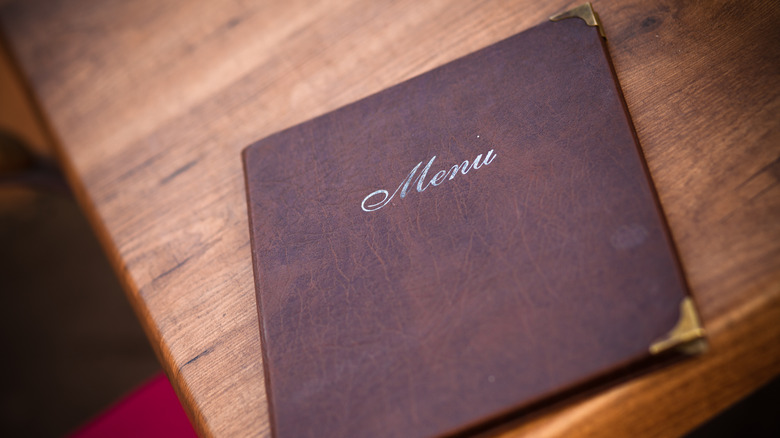The Clever Reason Restaurants Don't Put Dollar Signs On The Menu
From the moment we walk through the doors of a restaurant, our attention is divided. Greeted by the staff, we're led to a table where, menu in hand, we peruse the selections while being somewhat distracted, busy taking in the restaurant's atmosphere while engaging in conversation with our dining companions. If we think about the menu at all beyond what it offers, it's probably just to notice its visual appeal. But from the restaurant's point of view, the menu is a marketing tool. It needs to influence us to order the items that ensure profitability for the business. The challenge for the restaurateur is to create a menu that drives us to order those items, but in an unobtrusive way that doesn't detract from the dining experience.
One of the psychological strategies that restaurants employ to direct our spending is to drop the dollar sign from the pages of the menu. We all know that dollar signs represent money, and if we see that dollar sign over and over again next to every item on the menu, as we're scanning the choices and deciding what to order, it reminds us that we're about to spend money; and maybe a lot of it. Without dollar signs, we still understand that those numbers next to a menu item are what it costs, but the communication of the price is more subtle and keeps us focused on the experience rather than the cost of the experience.
Menu engineering and the future
Restaurants have a long history of using psychological strategies to encourage their customers to spend freely. For example, a menu presented in a leather-bound cover has long denoted luxury, implying that while the items listed on it may be expensive, they're worth it. Similarly, an elaborate font on menu pages can signal "special occasion" — with the price therefore worth it — while a plain font on the menu at a family restaurant gives the impression the place is affordable enough to drop in there frequently.
Concepts such as these have been employed more deliberately recently with the emergence of "menu engineering." Now commonplace in the restaurant world, menu engineering entails using a detailed analysis of sales data to design menus that maximize profits. These are tough times for restaurants, with prices continuing to rise and consumers not dining out as often as in the past. But the next wave in menu engineering, utilizing technology, may be the saving grace for restaurateurs. As more menus go digital, restaurants may find new ways to innovate to thrive.
Digital menus can be updated instantly, with price changes made in real-time to reflect the restaurant's changing food costs. Accuracy in orders is increased because customers input their selections directly, and with servers freed up from taking orders, they can provide hospitality in other ways. Ultimately, digital software provides enhanced data collection and analysis, enabling the restaurateur to make their best business decisions.

